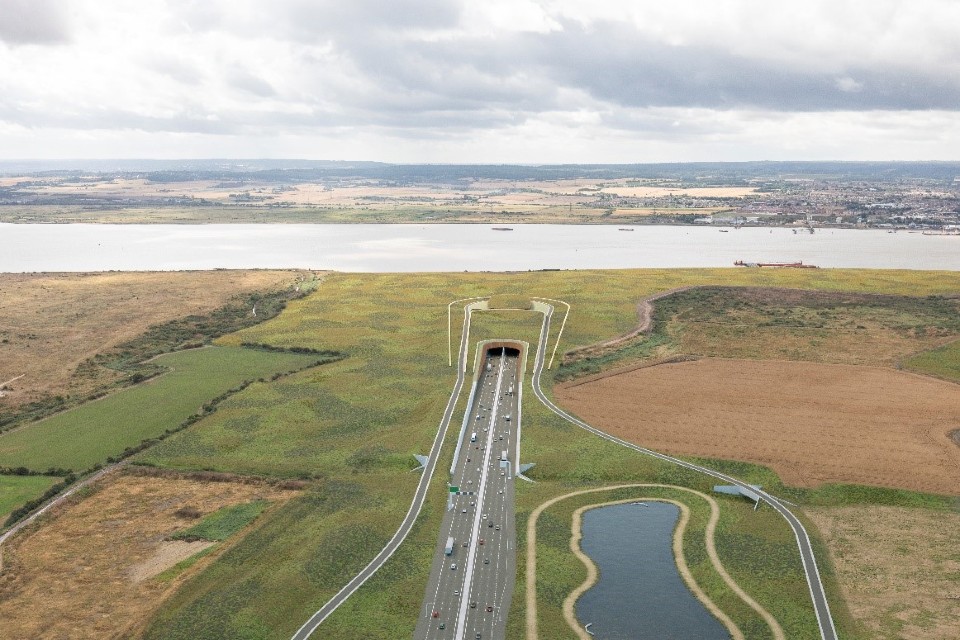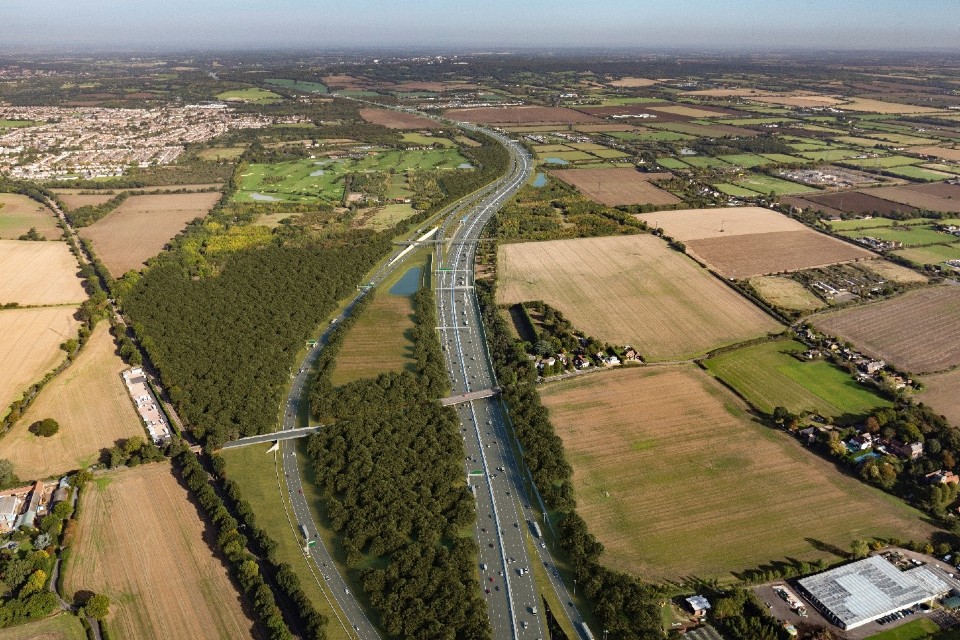
The further consultation into Highways England's proposed Lower Thames Crossing will give people the chance to have their say on latest changes to the multi-billion pound project.
The changes have been made after detailed analysis of the 29,000 responses received during the last consultation held in 2018, and new technical information following surveys and ground investigations.

This viaduct will carry the new Lower Thames Crossing route over the Mardyke valley
The Lower Thames Crossing will provide a new 14.3-mile 70mph road connecting Kent, Thurrock and Essex, with the world's third-widest bored tunnel.
It will almost double road capacity across the River Thames east of London, connecting communities, reducing delays and providing more reliable journeys.
The eight-week consultation began today (00:01 29 January) and will end at 23:59 on 25 March.
People can respond in the consultation by visiting one of 20 events in Kent, Essex and Thurrock, by completing an online survey through the Lower Thames Crossing website, sending a form via Freepost, or sending an email. More details can be found on the Lower Thames Crossing web pages.

The north entrance to the Lower Thames Crossing, in Thurrock
Chris Taylor, Director of Highways England's Complex Infrastructure Programme, said:
The Lower Thames Crossing is Highways England's most ambitious project in 30 years, designed to improve journeys across the southeast and open up new connections and opportunities for people and businesses.
Getting the views of the local community and businesses is crucial to designing a project that will offer the best value, maximise the benefits for all, while reducing the impact on local communities and the environment. This consultation is a chance for people to review and comment on a number of changes made since our last consultation in 2018, and to help shape this once-in-a-generation project.

The Lower Thames Crossing junction with the M25 (looking north), with a new bridge for Ockendon Road
The updates to the design include:
- providing direct access between Gravesend and the A2/M2 eastbound, and a redesigned Gravesend East junction and link roads to reduce congestion;
- extending the southern tunnel entrance (in Gravesend) 350 metres south to move the road away from properties in Chalk and reduce impact on protected bird habitats in the Ramsar Marshes and the Thames Estuary;
- removing the rest and service area and maintenance depot after further investigation and consideration of the issues raised during statutory consultation, which means the junction at Tilbury is no longer required;
- moving the alignment of the route between Tilbury and the A13 junction by approximately 60 metres (north-east) to avoid pylons and overhead cables;
- redesigning some slip roads around the A13/A1089 junction to move roads away from properties, improve safety at the junctions, and improve visual impact, and;
- removing one lane southbound between the M25 and A13 junction to reduce the amount of land required, while still providing sufficient capacity.
Other updated plans on show include:
- more details on the construction plans for the Lower Thames Crossing;
- a revised development boundary resulting from of the design changes, proposed utility diversions and additional land required for environmental mitigation, and;
- a set of proposals for maintaining, improving and upgrading the walking, cycling and horse-riding network around the Lower Thames Crossing.
Once the consultation closes in March, Highways England will analyse the new responses ahead of finalising its plans to seek planning consent for the project, through submitting a Development Consent Order (DCO).
As part of the DCO application, Highways England will submit a Consultation Report, explaining how the issues raised during both consultations were considered and responded to.
General enquiries
Members of the public should contact the Highways England customer contact centre on 0300 123 5000.






